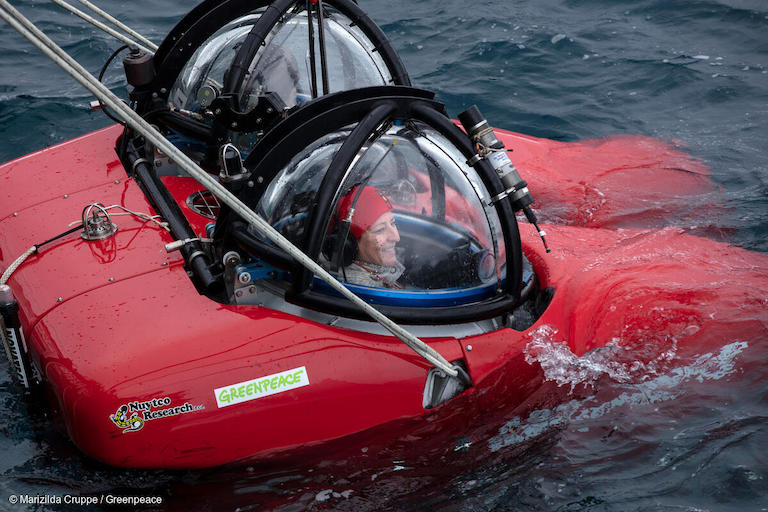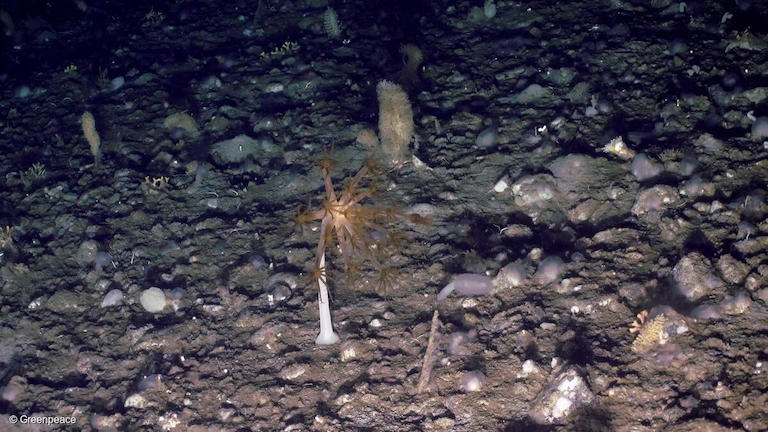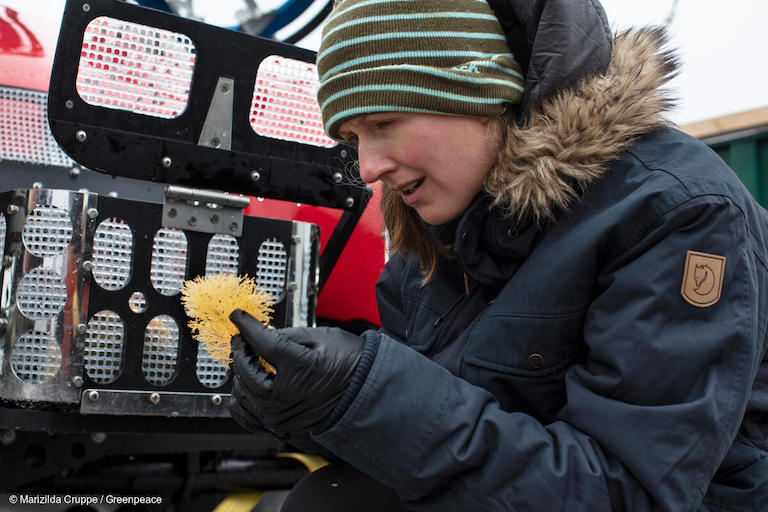- A research expedition led by Greenpeace identified about a dozen new vulnerable marine ecosystems in Antarctica’s Weddell Sea, and documented a range of organisms, some of which were previously unknown to science.
- Researchers argue that it’s vital to protect the Weddell Sea since this region helps to regulate the global oceans.
- This week, negotiators are discussing the establishment of a U.N. treaty that would protect the high seas, which could lead to widespread ocean protection.
- In October, the Commission for the Conservation of Antarctic Marine Living Resources (CCAMLR) will also revisit the proposal to establish three marine sanctuaries in Antarctica, including one in the Weddell Sea.
On March 9, a search expedition made a notable discovery: the 144-foot (44-meter) wooden ship known as the Endurance, that once carried explorer Ernest Shackleton and his crew to Antarctica, had been found 3,000 m (10,000 ft) deep in the Weddell Sea, 106 years after it sank in ice-crushing conditions. About 320 kilometers (200 miles) away, a different kind of search expedition was taking place in the Weddell Sea. A research team led by Greenpeace was documenting vulnerable marine ecosystems in this part of the Southern Ocean, capturing images of corals, sponges and other organisms that had never been seen before.

John Hocevar, the ocean campaign director for Greenpeace, who piloted the two-person submarines used in the expedition, said they had been able to explore further south than they expected due to the dramatic decrease in sea ice.
“There is less sea ice in the Antarctic waters than at any time in recorded history,” Hocevar told Mongabay on the phone while aboard the Arctic Sunrise, which, at the time was passing through the Drake Strait en route to Ushuaia, Argentina. “On the one hand, it was amazing for us to be able to explore areas that had almost always been covered with ice, but on the other hand, it’s a little horrifying to see firsthand how quickly climate change is impacting Antarctica.”

Through a series of 12 dives, the team identified nearly a dozen new vulnerable marine ecosystems, which, by the definition proposed by the Commission for the Conservation of Antarctic Marine Living Resources (CCAMLR), include cold-water coral reefs and sponge fields. These ecosystems tend to be very slow-growing and provide habitat protection for other organisms.
The teams documented a range of organisms, including ice fish, deep-sea worms, bottle-brush corals, glass sponges and jellyfish-like hydroids. They also took samples of some organisms for further study.
“We found a surprising concentration and diversity of marine life, even in areas that are usually covered by ice and have never seen sunlight,” said Hocevar, who compared some sites to tropical coral reefs in terms of their diversity and abundance of life.
“The colors are really incredible,” he added. “Most of the life down there is in the orange, yellow and red palette.”
Research expeditions in the Southern Ocean have traditionally used dredges or nets to collect samples of deep-sea organisms, but this expedition was able to collect images and video of marine habitats in the Weddell Sea while creating minimal disturbance to the environment.
“That is why the sub is such a powerful tool,” Hocevar said. “We are able to gather video data that allows us to see how these species live, how they interact with other species in their natural habitat. I’ve sent video clips of [ice] fish to the world’s leading expert on that type of fish and they had never seen images of them alive before.”

Suzanne Lockhart, a research associate at the California Academy of Sciences and leading scientist of the expedition, said that it’s important to protect the Weddell Sea for a number of reasons, including that it propels circulation for the global ocean.
“You can think of the Weddell Sea as the heart of the world’s ocean and that it helps pump and drive circulation,” Lockhart told Mongabay in a phone interview. “And so a healthy heart, of course, is going to lead to a healthier ocean overall.
Vulnerable marine ecosystems like cold-water coral reefs also draw in carbon dioxide, which is then buried in the earth when the corals die, Lockhart said.
“Putting carbon into these skeletal structures and things like coral means it will be there while the coral lives for hundreds of years, hopefully,” she said. “When they die it gets buried back into the earth instead of getting recycled back into the system. So protecting these coral communities is really important to help combat the rapidly changing climate.”
Hocevar said this research expedition aimed not only to document vulnerable marine ecosystems, but to build support for two ocean-related negotiations: a U.N.-backed oceans treaty that may be approved this year, and an ongoing bid to establish three marine protected areas (MPAs) in Antarctic waters.

Negotiators are currently meeting in New York to discuss the establishment of the U.N. treaty that would provide a legal framework for protecting marine biodiversity and the high seas, the vast expanses of ocean over which no country has jurisdiction. However, a decision may not be made until later in the year, Hocevar said.
Peggy Kalas, director of the High Seas Alliance, a partnership of organizations working to protect the high seas, has called the treaty a “once-in-a-generation chance to build meaningful protections for an environment that supports life.”
“With climate change and industrial-scale overexploitation now causing a startling decline in marine biodiversity, we may not get another chance,” she said in a statement.
In October, the CCAMLR will hold its annual meeting to discuss a number of issues, including the proposal to establish three MPAs in the Weddell Sea, East Antarctica and the Antarctic Peninsula. Collectively, these MPAs would safeguard about 4 million square kilometers (1.5 million square miles), which is about 1% of the world’s ocean. CCAMLR has previously failed to establish these MPAs, mainly due to China and Russia blocking the proposals.
Rodolfo Werner, a senior adviser at Pew Charitable Trusts and the Antarctic and Southern Ocean Coalition (ASOC), said the Russian invasion of Ukraine will add a “layer of complication” in getting these proposals approved, although he said he wasn’t sure what the impact would be. Both Russia and Ukraine are members of the Antarctic Treaty and CCAMLR. But while complications are expected, Werner said it’s more urgent than ever to protect the ocean around Antarctica.
“Antarctic conservation cannot wait,” Werner told Mongabay in an email. “The impact of global warming and the increasing fishing interest to the area are calling for the creation of marine protected areas as soon as possible. That is why we will not stop working on promoting this and trying to get MPAs over the line this year too.”

Banner image caption: Video still of a Cygnodraco mawsoni, seen among orange primnoid bottle brush corals and colonial tunicates. Image by Greenpeace.
Elizabeth Claire Alberts is a staff writer for Mongabay. Follow her on Twitter @ECAlberts.
FEEDBACK: Use this form to send a message to the author of this post. If you want to post a public comment, you can do that at the bottom of the page.
